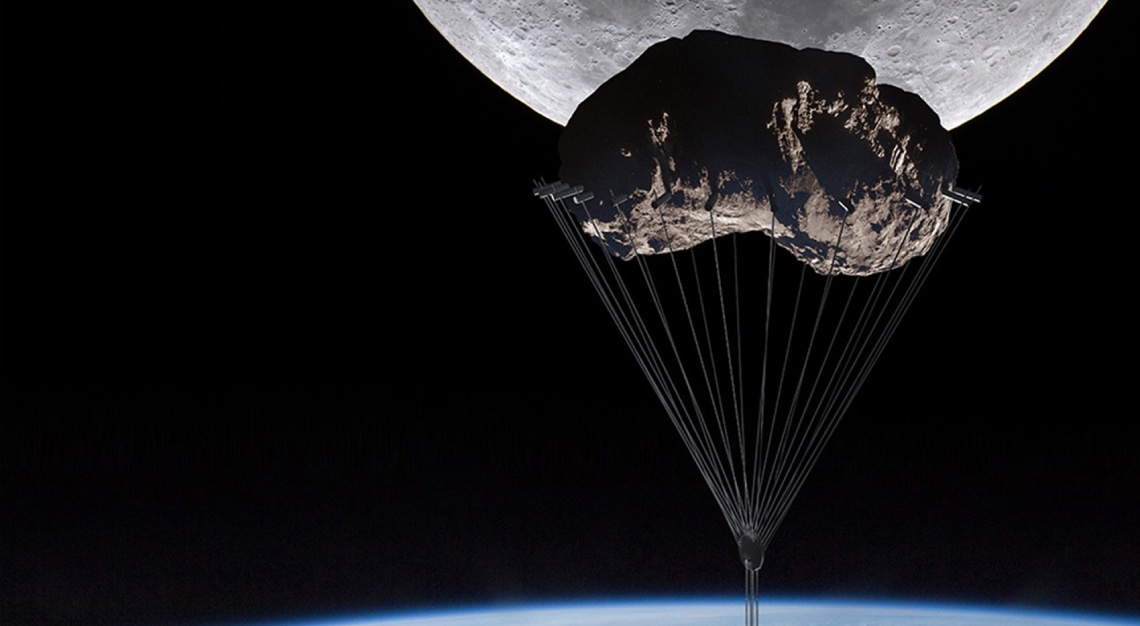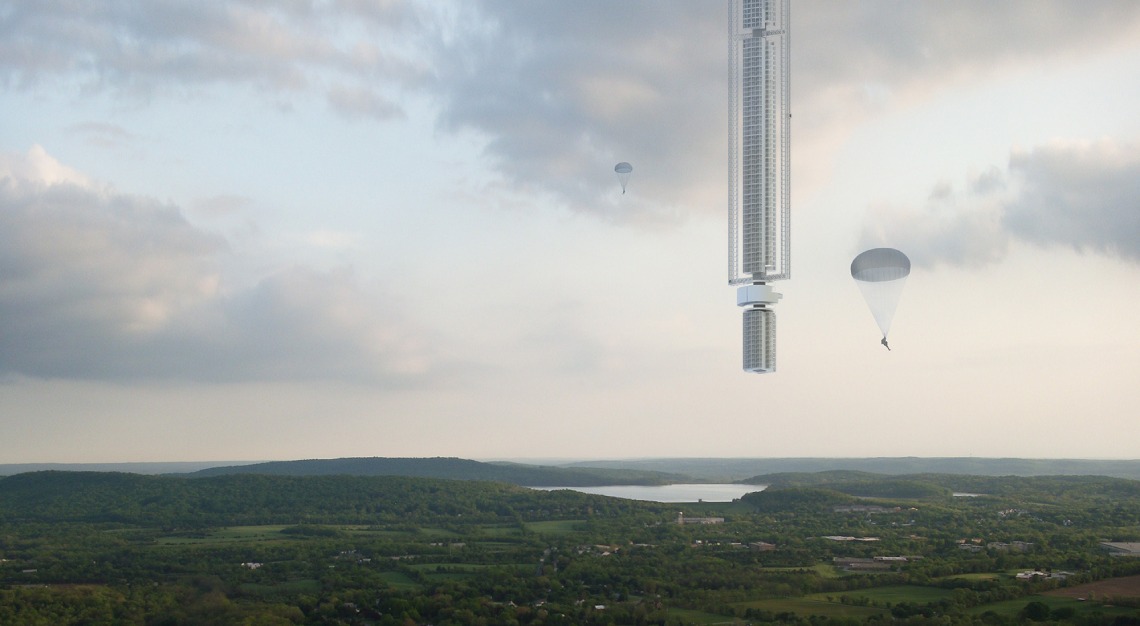It certainly looks like a better option than floating around in space
We’ve all seen those movies: set some time in the not-so-distant future, Earth, plundered of its resources and barren from pollution, has become a hostile environment unsuitable for life. Its human inhabitants repent, but it’s too little, too late. Mass migration to another planet is the only way out. Society descends into utter chaos as difficult questions are asked about who gets to go and who gets left behind.
But what if it doesn’t have to be this way? New-York-based Clouds Architecture Office (Clouds AO) has reimagined what apocalyptic evacuations could look like with the Analemma Tower, a concept skyscraper that is neither Earth-bound nor in space, but straddling the space between the two.

Instead of rooting the tower to Earth with foundations, Clouds AO proposes that the building be tethered by a cable to an asteroid that has been placed in Earth’s orbit. To illustrate, imagine a hot air balloon with a long, skinny building in place of the basket, an asteroid in place of the balloon, and the whole curious set-up floating at a much higher altitude than a balloon ever would.
It may sound like something straight out of science fiction, but the concept is in fact grounded in the research driving NASA’s Asteroid Redirect Mission (ARM).
Under the ARM, NASA has been monitoring various asteroids that come into orbit near Earth in order to identify one with a suitable velocity, orbit, size and spin. Once one such asteroid has been identified, the space agency intends to approach it with a robotic spacecraft, which would collect a multi-tonne boulder from its surface. The boulder would be redirected into stable orbit around the moon.
The viability of the Analemma Tower therefore hangs on (pun intended) NASA’s success in manipulating asteroid orbits, not just around the moon, but also Earth.
If it all works out, the asteroid would be orbiting at 50,000km above Earth. The top of the tower would begin, dangling below a mass of cables, at 32,000m, while the bottom reaches 3,400m. This makes the tower 28,600m tall, with the very highest floors experiencing temperatures of -40°C, 40 minutes more daylight, and decidedly different views outside the windows than the lowest floors, where temperatures are -4°C and all the other (relatively old-fashioned) Earth-bound buildings are in sight.
Ostap Rudakevych and Masayuki Sono, the architects behind Clouds AO, have pointed out that one of the main advantages of floating structures is their low impact on Earth. “By leaving the surface, we can allow our planet to heal itself. There won’t be any need for dead concrete highways and sprawling concrete urban agglomerations that choke the Earth’s surface,” Sono has said.

The firm has proposed that entertainment, business and commercial activities take up the bottommost floors of the tower, with residential areas about two-thirds of the way up, and religious spaces occupying the highest floors.
Don’t worry, the elevator ride wouldn’t take forever. Cable-less electromagnetic lifts would free the tower’s inhabitants from the limitations of elevator cable spools. And there would be no need to walk around in spacesuits; the sizes and shapes of the windows would change at each height segment to account for temperature and pressure changes.
The entire tower would run on space-based solar power. Collected by satellites carrying solar panels, the advantage of space-based solar power is that it should be more abundant, since daylight lasts longer out in space and UV radiation is stronger outside the protection of the atmosphere. Water would be filtered and recycled in a semi-closed loop system and replenished with condensation collected from the clouds and rainwater.
According to Rudakevych and Sono, the inspiration for Analemma Tower came from looking at architectural history. Through the ages, building heights have been reaching increasingly skywards. We’ve gone from dwelling in caves to building pyramids, then constructing churches with lofty spires, before arriving at our current fascination with skyscrapers. Dangling a skyscraper from space is the natural next step.
The firm has also pointed out that property price trends indicate that higher floors tend to command higher prices; selling real estate located 32,000m above ground can’t be bad for business.






